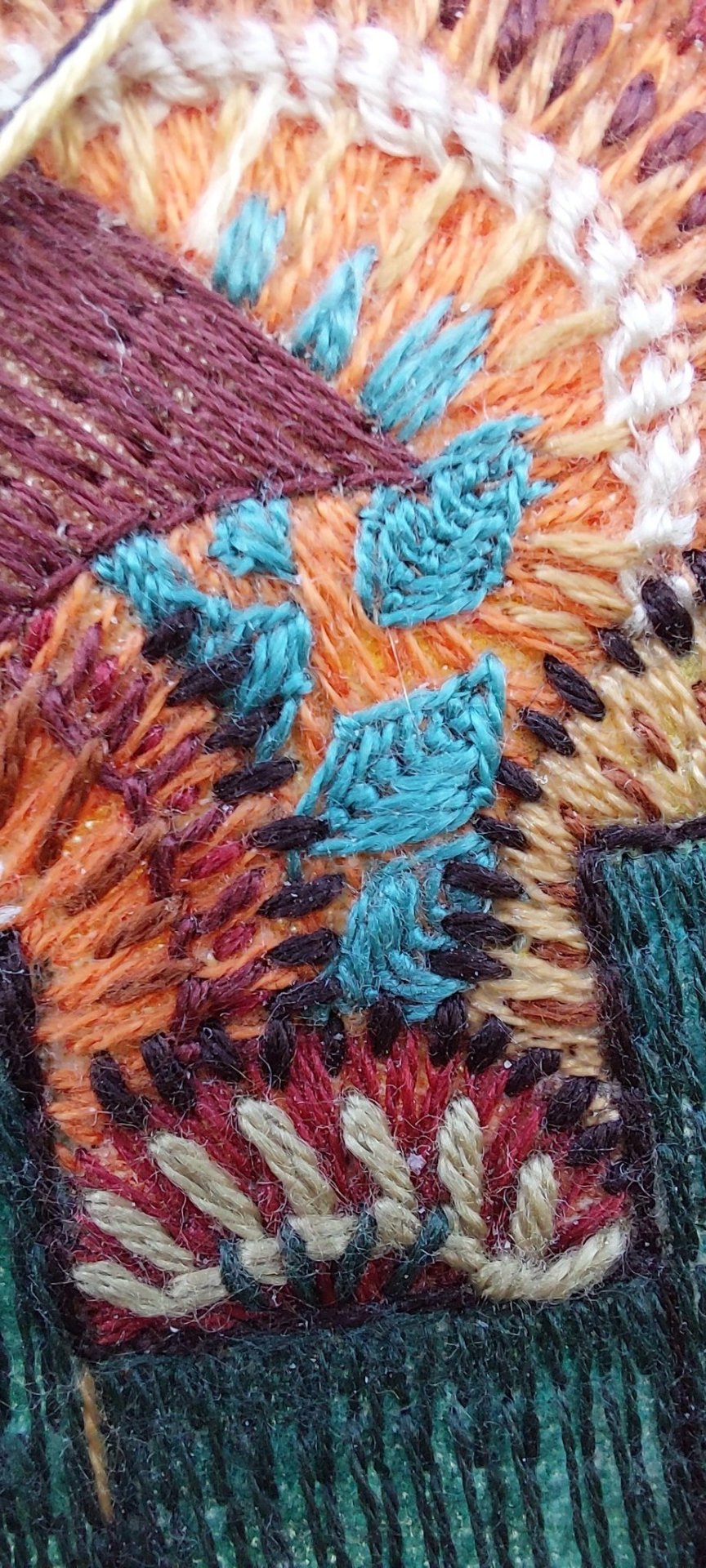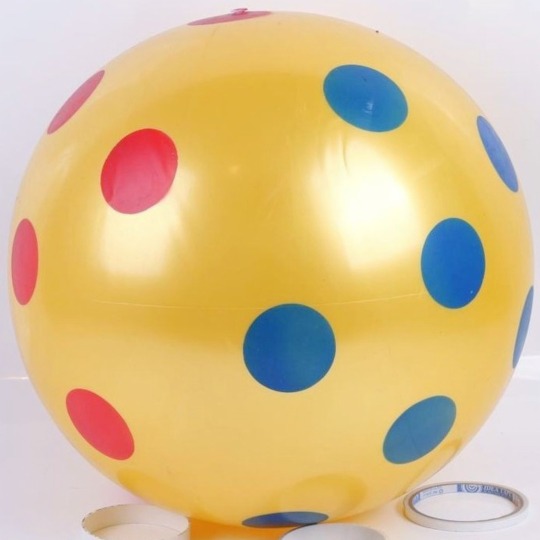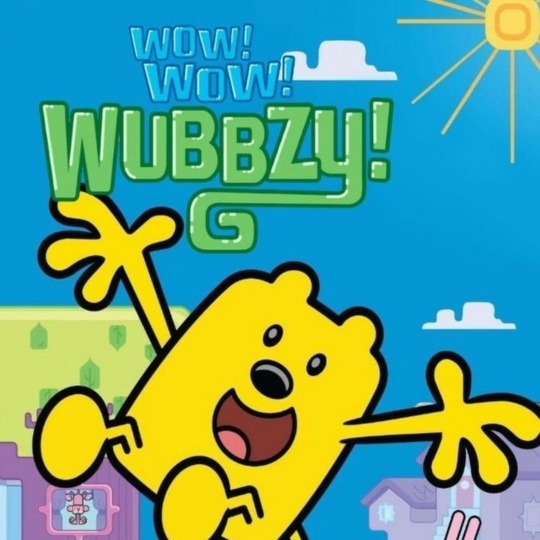#The Bright Ages
Text
Book Review 5 - The Bright Ages by Matthew Gabrielle and David M. Perry

Okay, the Harper Collins strike is over, so I can finally post this! As you might notice, the wait has meant I have ended up writing far too much of it. Turns out people really are telling the truth when they say writing negative reviews is funner and easier.
Anyway, I did not like this book! It’s an ungainly thing, torn halfway between wanting to be pop history and wanting to be an intervention in the discourse, and entirely too short to do either well. Insofar as is it history, it’s far less revolutionary than it seems to think it is, and the subjects it actually focuses on either already fit entirely into the pop understanding the book is positioning itself against, or else entirely about symbolism and architecture and generally abstracted from (being partial and small-minded) the stuff I’m actually interested in.
All that said the first and fundamental is pretty simple – it’s just altogether too short to do what it wants to. The book tries to be a history of the European Middle Ages – a thousand years of history for an entire continent (more than, given the repeated digressions about the Middle East and also the Mongols one time) – in 200 pages. Which is just, like, I mean I don’t want to say impossible, but I can’t really see any way you’d do it. Which means what we actually get is a series of snapshots, scattered across space and time – just specific, particular dynamics or situations that rarely have much to do with each other. I’m pretty sure the only specific place we ever return to after focusing on it is Ravenna, and that’s for a big, dramatic bookend starting the age with Galla Placidia and ending with Dante. Also the return is really more about Italian city states as a whole. Which is to say only Florence gets any detail at all.
A necessary causality of the snapshot approach is that there’s wide swathes of the period that just, aren’t mentioned in the slightest. Which again, fair, but also it’s a bit much for one of the lacuna to be the entire Holy Roman Empire, right? (Okay, not the entire, there’s repeated off hand mentions of Emperors, and also talk of how the Italian city-states fought the Empire. Just never any description whatsoever of what it, like, was. Except for the specific disavowal of saying it started with Charlemagne, which was never followed up on.) Which is still better than what Poland or Hungary or Lithuania or Kievan Rus got – if any of them were even mentioned, it was only off hand. Which does end up giving the impression that Medieval Europe included Jerusalem but not Krakow – to be fair, something a lot of actual Medieval people might have totally agree with. But given the amount of time spent on the Crusades to the Levant and the Albigensian Crusade, not even mentioning the bloody Christianize of the Baltic in passing feels negligent to the point of being actively misleading.
Also it’s weird, given the books whole focus on connections and commerce between Europe and the rider world – the steppe is right there! You don’t need to wait for the Mongols!
Speaking of – they give a bunch of apologia for the Mongol Empire that’s – well, basically the same stuff all empires get, brought safety to the roads and allowed free movement and trade, brought people together, spread culture and technology, enlightened and cosmopolitan, etc. Which I mostly just find funny because of how obvious it is the authors would, uh, probably not endorse the same sentiment for any more recent imperial projects.
But okay – it’s not that you can’t tell a useful history in what might seem to be way too little space – John Darwin tries to tell a literal history of the world from the 16th century in ~500 pages and I’d still say After Tamerlane is absolutely worthwhile reading. You just need, you know, discipline. Focus. A firm idea of your thesis and an obsession of what’s relevant to it (or just be entertaining and full of fun memorable trivia). So, what are Perry and Gabrielle actually trying to do here?
Honestly, it’s a little bit unclear? The thesis they present is that the Dark Ages didn’t exist – they insist on referring the whole Medieval period as ‘the Bright Ages’ through the entire book, it’s incredibly annoying – and that the Medieval period get a horribly unjustified bad wrap as uniquely cruel and provincial and barbaric and full of disease, illiteracy, superstition, etc. They explicitly position themselves as being a reaction to the vision of the past you see in Game of Thrones or Vikings (I’d say ‘or the Witcher’ but again, for the purposes of this book Eastern Europe doesn’t exist). Instead, they fill the book with hand picked examples of medieval beauty, sophistication, and connection to the wider world with the quite explicit contention that everything good about the Renaissance (and later) was really just outgrowths of the Medieval, and it was only the bad stuff that was new.
(At the same time, they also do not like white nationalists, and go out of their way at length on numerous occasions to remind you that Nazis are bad. Those digressions do always leave me wondering who they’re for – no actual Deus Vult type is going to get more than five pages into it, and they rarely get much deeper that surface level refutation of things no one else is likely to actually believe.)
Anyway – look, the central, overriding problem of the book is that it’s not nearly as revolutionary as it seems to think it is. Very problematic, when it has such a high opinion of itself for being so. The assorted trivia the book uses as shocking examples of how cosmopolitan and tolerant the period was mostly just, well, fit perfectly fine into the popular imagining of the Medieval era? Like ‘royals and elites imported foreign luxury goods and status symbols at great expense; missionaries, adventurers and religious emissaries travelled across Eurasia to preach, trade and try to find someone to help them invade Muslims ; women often wielded significant political influence by virtue of royal birth of marriage, and were active political players’ – are these statements shocking to literally anyone? Basically all of that literally happens in Game of Thrones!
Part of that is that the book keeps almost committing to a really radical thesis – not to say pure unreconstructed romanticism, but close to it – and then always has an attack of professional ethics and cringes away from it, and just awkwardly brings up how, to be sue, there were serfs and slaves and atrocities, but nonetheless when you think about it the later Crusader States really were fascinating sites of cultural exchange, or whatever.
Psychoanalyzing the authors is bad form, of course, but like – reading this book the overriding sense you get is that they’re proud progressives, and have dedicated their lives to studying the Medieval era. But in the contemporary discourse people on their side use ‘Medieval’ as an insult to mean patriarchal, or brutal, or cruel, and the people who like the Medieval era are all in the Sack of Jerusalem Fandom. The sheer angst and righteous indignation they have about this state of affairs just about oozes through every page – honestly if I’m being maximally pithy and uncharitable, you rather get the sense that the real aim of the book is to make ‘being really into Medieval history’ a less reactionary-coded interest to bring up at professional-class dinner parties.
But honestly I could have forgiven almost all of this if the anecdotes and snapshots the book did focus on were informative and interesting. And this is almost entirely pure personal preference, I fully acknowledge but – the things that the book chose to focus on just really weren’t, to me?
Which is to say that The Bright Ages is incredibly interested in architectural and monumental symbolism, especially of the religious variety – there are whole chapters overwhelmingly dedicated to exploring the layout of churches and how their architecture and lighting was meant to convey meaning, or detailing at great length a specific monumental cross in northern England. These are used as synecdoches for broader topics, of course but, like, an awful lot of word count really is dedicated to describing how Gala Placedia’s chapel in Ravenna must have wowed people. And even as far as using them as synecdoches – the way that monasteries, bishops and the royal household in Paris competed to have the most impressive church/chapel as a way to convey religious authority is genuinely interesting, but I’d honestly have rather heard a lot more of the actual politics and sociology or how sacred authority and legitimacy was gathered around the Capetians in the later middle ages and a lot less about how specifically impressive the royal chapel on the palace grounds was. There’s a massive amount of symbolic and artistic detail, a fair amount of time spent charting great thinkers and proving that there was too such a thing as a Medieval intellectual, and almost none at all on, like, political and social and (god forbid) economic history. Which are, unfortunately, the bits of it I’m actually interested in.
The book isn’t just architecture of course, but much of the rest is either very basic – yes, the vikings were traders as well as raiders and travelled shockingly long distances, yes there was intellectual interchange between Muslim, Jewish and Christian thinkers across the Mediterranean, yes the Church acted as a vital sponsor of learning and scholarship. I’m sure these are new information to like, someone? - or so caught up in historiographical arguments and qualifications that it loses sight of the actual subject – I swear the book spent more time saying that it’s wrong to call it a Carolingian Renaissance because that implies there were actual dark ages before and after than it does explaining why anyone actually would.
Beyond that – okay, so as mentioned this book is really consciously progressive. Which, beyond a certain antiquarian distaste for how desperately they’re trying to get across ‘see, our field of study is Relevant! And Important! Please please please give us tenure/prestige/funding’ I wholly support. (I mean, like, I do think Medieval Studies deserves tenure/prestige/funding. Just slightly unbecoming to so transparently be grasping for it, and also more than a bit self-defeating) - but, like, the book’s politics are weird? Or weirdly surface level and slightly confused, given how much of the book is focused around them.
Like – the book spends a massive amount of time and attention combating the myth that women in the middle ages were all cloistered and politically mute and totally powerless. But the sum total of what it actually says is ‘did you know: elite women in the aristocracy and church exercised political influence? And a lot of the Christianization of western Europe happened through highborn christian women marrying pagan kings and raising their children Christian?” And while I suppose ‘elite women have influence even in patriarchal societies’ is a useful fact for someone to learn, I’m not sure examples that more or less cash out to ‘queens could have power by manipulating their husbands and sons’ is a particularly novel or progressive take, you know? More broadly – it’s a weakness of the book’s framework of jumping across countries and centuries between anecdotes that we never get any sense of gender roles and how power and influence were gendered systemically, so much as single (or if you’re very lucky, two or three) particular women with a vague gesture that they’re kind of typical. Not to complain about a lack of theory, but there’s really basically zero theory.
The book’s choices of examples for women to focus on are also – okay, not to be all ‘why didn’t you talk about my faves’, but insofar as you’re talking how women were able to exercise power, it’s really very odd that you never talk about any women who, like, ruled in their own right? C’mon, you mention the Anarchy offhand to introduce Eleanor of Aquitaine but don’t even say what it was about, let alone talk about the Empress Matilda? (I’d say the same thing about Matilda of Tuscany and the investiture Controversy, but it’s not like the book actually talks about the Investiture Controversy beyond the absolute basics, so). The final result is a book that talks a lot about how elite women had influence, and then the influence they actually bring up is almost always of the most stereotypically feminine-gender variety imaginable.
All that really pales to how confused the book seems when it talks about Christianity. Which it has to, of course, fairly constantly – it’s a book about Medieval Europe. But it’s kind of horribly torn between two imperatives here – on the one hand, it desperately wants to fight back against the whole black legend of the tyrannical, book-burning, Galileo-murdering, science-suppressing hopelessly venal and corrupt, all-powering Magesterium. But on the other, they really don’t want to come off as supporting, well, the heretic murdering and antisemitism or being the sort of guy online who posts memes of the Knights Templar. So you see this somewhat exhausting two-step where they go on at length about all the beautiful architecture and scholarship preservation the church did interrupted every so often by this concession about how of course it wasn’t all good and obviously pogroms and burning heretics wasn’t great, but- (The chapter on the vikings is much the same, except with a much clearer ‘it’s important not to romanticize these people because the people who do that are white nationalists, but also see how tolerant and far-ranging and cool they are?’)
Discussing the Church is also a place where the book’s whole allergy to social structure and institutions really serves it poorly. I at a certain point stopped keeping count of the number of times where the book called out that the centralized, papal-centric Church was a creation of the high middle ages, and not at all how things worked for most of the period. But then they just never actually explain how they worked instead, or really even how things changed to so enshrine the Pope’s power. They talk about how convents could be wealthy and powerful landholders and their abbesses’ wield significant power, but never even gesture at explaining how they interfaced with the institutional church. It’s really very frustrating.
Of course Christianity still gets far better treatment than Judaism or Islam – there’s a chapter which goes into some detail on the life of Maimonides in the process of extolling Medieval scholarship and talking about how classical learning was never really lost and the Renaissance is fake news. But despite the gestures to the presence of Jewish communities throughout Europe there’s essentially zero, like, description of how they actually functioned, or were organized, or (aside from the occasionally mentioned pogroms) how they interacted with their christian neighbours. The treatment of Islam is much the same – there are some mentions of the Islamic wold and its intellectual traditions, but essentially just to rehash the same points about the Islamic Golden age and Ibn Sina and all the other bits of trivia everyone probably picked up keeping up with the culture war during the Bush Administration. But again, only the most passing mentions of, like, politics or organization or even theology. It felt gratingly cursory, given the emphasis placed on the fact that eg Al Andulas was clearly part of Medieval Europe
Underneath all this is just the fact that The Bright Ages is almost an entirely a history of the elite. Peasants, serfs and slaves only exist in the for the sake of concessions about how of course things weren’t all good. The book has almost no interest in the lives of the lower classes, and barely seems to realize this. It starts to really, really grate, especially when you’re making all these implicit judgments about how the Medieval era was compared to what came after – in which case, the lives of, like, 90% of the population are rather important! Like unironically peasant life is fascinating! What did life actually look like of the overwhelmingly majority of people? If you want to give a sketch of the entire era, it’s kind of important.
I’m almost certainly being unfair here – basically everything about the book’s sensibilities grated on me, so I can’t say I was trying to be especially charitable. But really – the book’s perfectly fine light reading, but as intentional propaganda is hamfisted and it’s unclear who it’s for, and as an actual history it’s just...bad. It’s useful as a way to get a sense of the discourse, I guess, but otherwise I couldn’t really recommend it.
76 notes
·
View notes
Text
I've started reading The Bright Ages in the hopes of improving my understanding of medieval history... All Gabrielle and Perry have managed to prove so far is the importance of properly referencing your work! I've never seen such shockingly bad scholarship, even by popular history standards!
I'm 90% sure they're twisting history to fit their thesis. Reading it just doesn't feel right and that's with my basic understanding of 5th century Western European history. Yet, I can't easily look anything up because NOTHING IS REFERENCED! I can't even track down the primary sources they're quoting from!
I also have no idea what they're saying in places because they haven't properly defined their terms. Like what do you mean by "Rome" - the city? The Western Roman Empire? The Western Roman Emperor? The system of governance? The cultural norms? The military? Christianity? Gabrielle and Perry seem to use Rome to mean all of these but interchangeably. There's no consistency and that makes the argument a bit hazy.
#the bright ages#books#reading#history#history writing#popular history#references are important#i can't see me finishing this book#it's shocking#I've spent too long studying history to tolerate this sort of drivel
3 notes
·
View notes
Text






My embroidery of the Sera character card from Dragon Age Inquisition is now complete!
75 hours of work, 11.5x19.5 cm
-
[Image description: An embroidered version of the Sera character selection card from Dragon Age Inquisition. She stands atop a slanted tree trunk with her bow held suggestively between her legs, looking at the Skyhold tower in the distance, where the tiny figure of the inquisitor is present in the window. Mountains and turrets make up the background behind her.]
#dragon age#dragon age inquisition#dragon age sera#embroidery#bioware#my embroidery#I mainly chose this one because the bright colours were appealing. The colours for the previous Cassandra card were mainly orange and black#my favourite new stitch that I learned for this was the Catherine Wheel
10K notes
·
View notes
Text

#destiny 2#cyberpunk 2077#red dead redemption 2#the outer worlds#dragon age inquisition#death stranding#god of war ragnarok#mass effect#dragon age#fallout 4#nick valentine#goro takemura#phineas welles#maximillion desoto#saul bright#varric tethras
16K notes
·
View notes
Photo


I’m reading The Bright Ages right now and really enjoying it (if you’ve read the Goodreads reviews you’ll know it has its detractors, but I think it’s an interesting way of looking at things, and I love when I can tell an author or authors had fun writing a book)! I also look longingly at Ravenna whenever I’m in at a book store that has it because I love the cover, and after starting The Bright Ages, I might finally have to buy it! Not the reading theme I had in mind for myself this spring, but here I am.
1 note
·
View note
Text

pov: ur sarge is more unhinged than u thought (he’s a demolitions expert)
#soapghost got trapped at enemy lines#soap proceeded to clean house#ghost started realising maybe the real threat is the youngest sas sergeant afterall#logs back on tumblr: yall guess what#i played cod for cathartic reasons since ages ago but internet babygirled ghost#and i didnt jump onto the bandwagon but it snags me by the collar n wont let go#soapghost#ghostsoap#ghoap#lmao#john soap mctavish#simon ghost riley#soap x ghost#ghost x soap#cod#call of duty#cod mw2#mw2#modern warfare 2#soap is highly competent people just forgot bcs hes a big bright puppy#except they dont know the reason why hes so happy is bcs he has a cathartic coping mechanism#hey man demolitions experts tend to be arsonists and manic#soap is the youngest sas member. dyou rlly think a man with that competency is right in his head?
6K notes
·
View notes
Text


#dragon age#datv#on the bright side expect to see more of me when we actually have shit to talk about again lol
1K notes
·
View notes
Text
mk and mei sleepover (gone wrong)
#my art#it is twelve at night rn and this video looks like okay brightness in the dark of my room so??#i hope you guys can see it#lmk#lego monkie kid#lego monkie kid fanart#monkie kid#monkie kid fanart#lmk fanart#goldendragon#jackfruit duo#lmk mei#lmk mk#qi xiaotian#long xiaojiao#ive had this audio for ages im glad i finally got around to using it lmao
2K notes
·
View notes
Text

NSFW / KINK BLOGS DNI
#meme#word art meme#word art#funny#memes#tw bright colours#tw bright colors#agere#sfw agere#sfw#age regression#age regressor#age re safe space#kidcore#relatable#polly pocket
510 notes
·
View notes
Text
Wow Wow Wubbzy!!










#wow wow wubbzy#!!!!#I've been meaning to make this since Robin posted this dni banner lol#i couldn't decide between pastels or bright colors you see#but i like how it turned out#so i hope you like it!#as always#sfw interaction only#sfw agere#agere#moodboard#age regression#sfw littlespace#agere moodboard#age dreaming#babyre#baby regression
324 notes
·
View notes
Text










#neon#bright colors#plushie#cute#agere#neon genesis evangelion#age dreaming#age regression#agedre#system little#stuffie#little#stuffed animal#scene#scenemo#scenecore#webkinz#monster#centipede#bug#isopod#bear#teddy bear#mushroom#squishmallow#toucan#mole#cat#dinosaur#kitty
1K notes
·
View notes
Text
So 150 pages in The Bright Ages and I mean, I guess I'm just not particularly impressed? It goes on and on talking up such a big game about being a corrective to the popular understanding of the medieval era from Game of Thrones or the Northman or Crusader Kings or whatever, but all the things it touts as big, like, revelation fit into the paradigm they say they're fighting back against perfectly fine?
Honestly 'The king import an elephant at vast expense to show off in his court and then get extremely sad when after a few years of being a mascot it suddenly dies' seems exactly like something that would happen in A Game Of Thrones.
48 notes
·
View notes
Text


Happy birthday to the Silver King. Insane that it's been... a... decade???
#ht draws things#flight rising#it's been ages tbh but drawing FR dragons is just... your hands don't forget I guess#I also forgot how BRIGHT the colors are here wow
183 notes
·
View notes
Text

@just-a-drawing-bean let me join them in another unholy collab, adding some colour to their delicious line art
@naffeclipse we are both very normal about your guy, prommy
[ID: a digital painting of Mafia!Eclipse sitting with his right arm resting on his raised knee- his other hand is adjusting the collar of his coat, he grins menacingly at the viewer. Colours are graphic, bright and stylised with red, purple and orange. /End ID]
#thankyou beeeean I had a lot of fun#took me ages to decid how I wanted to colour this#too many good choices imo#sleuth jesters#mafia eclipse#fnaf eclipse#fnaf dca#fnaf daycare attendant#dca fandom#tw eyestrain#tw bright colors#qwilledraws
1K notes
·
View notes
Text

wuff? awuff WUFF

#puts bright colors in your face#sorry for ysing toy keys in every board i LOVE TOY KEYS SO MUCH#sfw age regression#age regression#sfw agere#agere#agere board#puppyre#puppy regression#puppycore#sfw interaction only#inner child healing#sry my regression is rlly a mix of 5 year old and also puppy#plz be nice to this post#ft roblox avatar
196 notes
·
View notes
Text

trionychid turtles 1 dakotaraptors 0
#honest to God The Most Cathartic Thing ive drawn in ages#please dont ask me if dakotaraptor is real or not i didnt live back thrn i dont know#you can draw anything#draw donnie with a dinosaur#theres layers to this i promiseyou read abt dakotaraptor. funniest shit in paleo history#rottmnt#rise of the teenage mutant ninja turtles#rottmnt donnie#tmnt#eyestrain#bright colors#my art
265 notes
·
View notes